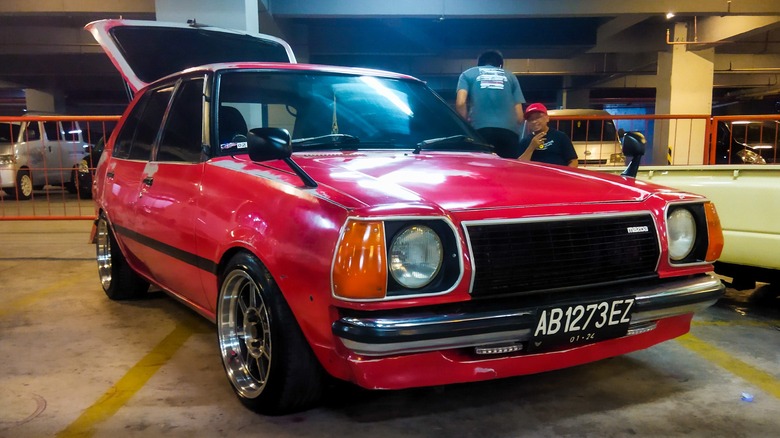Why Did Mazda Discontinue The 323 & What Else Was It Called In North America?
Mazda has used a few different naming systems for its cars over the years, including tagging two of its iconic rotary engine-powered sports cars with the prefix "RX." Mazda used three-digit model names for some of its more conventional piston-engine cars from the 1960s on, including the labels 323, 626, and 929 in ascending order according to size, cost, and refinement. That system was overhauled with the release of the 2003 Mazda6, which replaced the 626 model. Next up was the 2004 Mazda3, which replaced the 323 and Protegé. That naming system continued with the 2006 Mazda5 — a compact minivan built on the Madza3 platform — and the subcompact 2010 Mazda2.
Currently, only the Mazda3 retains this naming convention, simply because the discontinued Mazda6 has joined the rest of its similarly-named brethren in being dropped from the automaker's lineup. The Mazda3, which offers a quick turbo engine, now comes in 5-door hatchback and 4-door sedan body styles. The MX-5 Miata roadster retains a unique naming system which includes the U.S. market-only "Miata" label that was assigned to the car at its 1989 Chicago Auto Show debut.
Mazda now boasts an SUV-heavy lineup of vehicles with model names made up of the letters "CX" followed by a number, with larger numbers signifying a larger vehicle — except for the long-running CX-5, which slots in between the CX-30 and the CX-50. At the top of Mazda's offerings are the CX-70 and CX-90, which are available with turbocharged inline-six cylinder or plug-in hybrid powertrains. The Mazda 323 was known as the GLC and Protegé in North America at different points during its four-decade evolution into the Mazda3.
The Mazda 323 was originally sold as the GLC in North America
The Mazda 323 was badged as the Familia in Japan and GLC (for "Great Little Car") in North American markets when it was first released. The GLC's base price under $4,000 (equal to about $21,000 today) and fuel economy of over 30 miles per gallon made it popular with an economy-minded buying public still reeling from the mid-'70s oil crisis. It retained the GLC name through a 1981 change to front-wheel drive, which it kept through the 1986 model year when a new generation appeared with the 323 nameplate. In 1988, Mazda produced the 323 GTX, a rally-ready version with all-wheel drive and a 132-horsepower turbocharged 1.6-cylinder engine.
The 323 was updated again in 1990, after which the hatchback kept the 323 badge and the sedan version was renamed the Protegé. In 1995, the hatchback was dropped, taking the 323 badge to the scrapyard with it. The Protegé got the high-performance Mazdaspeed treatment later in the decade and in the early 2000s, including a 170-horsepower engine for the 2003 version. The next year, it was replaced by the new Mazda3, which we reviewed in 2023. That model is still in production today and is sold around the globe, carrying on the 323's lineage.
